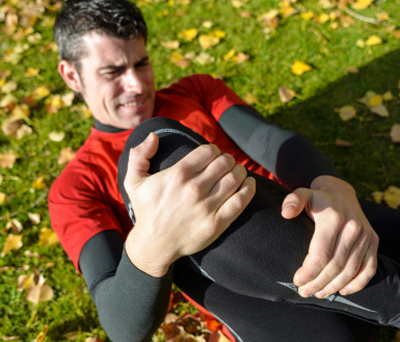
It was a beautiful game-winning catch during a weekend game of touch football, but unfortunately, your knee paid the price for glory. There was a pop and your knee hyper-extended when you landed – a few weeks rest did not help. Your doctor said you probably tore your ACL.
The ACL is one of four major ligaments that stabilize the knee. In active individuals, especially those playing sports with rapid changes in direction such as soccer, baseball, hockey, football, or skiing, an ACL tear is one of the most common significant injuries to the knee.
“Once an ACL is torn, it cannot heal or repair itself,” says Rick Wright, MD, co-chief of sports medicine service with Washington University Orthopedics and team physician for the St. Louis Blues and St. Louis Rams.
“We can improve range of motion and mobility with muscle-strengthening exercises to a small extent, but reconstructive surgery is the best option for those who want to regain an active lifestyle.”
Torn ACLs are reconstructed by taking strong, healthy tissue from either the patient’s patellar tendon (a strip of tendon underneath the kneecap) or a hamstring and surgically attaching the graft to the thighbone and shinbone. Donated cadaver tendons also can be used. The procedure restores stability.
“It is not uncommon to injure the other knee at a later date,” says Dr. Wright, who has specialized in ACL reconstruction and other knee procedures for more than 13 years. “Research has shown that the opposite normal knee is just as likely to rupture after ACL reconstruction of the first knee.”
Dr. Wright is a principal investigator in the MultiCenter Orthopedic Outcome Network (MOON) for ACL reconstruction. For the past several years, a national network of orthopedic surgeons in nine medical centers has been tracking ACL reconstruction patients to determine what risk factors lead to the development of a second ACL tear or the onset of osteoarthritis or decreased mobility in either knee.
Investigators are also closely evaluating the differences in male and female anatomy to see how gender plays a role in the potential for ACL injuries. “By following a large number of ACL patients in all of the medical centers involved, we hope to identify the variables that enable us to predict which patients are more likely to develop future injuries,” says Dr. Wright. “We can then evaluate treatment and therapy options to try to prevent those secondary injuries from occurring.”
If you suspect you have a torn ACL or would like a second opinion, call 314-514-3500 to make an appointment with Dr. Wright.
Patients are seen at:
Orthopedic Surgery Center
Center for Advanced Medicine
4921 Parkview Place
6th Floor, Suite A
St. Louis, MO 63110
Washington University Orthopedics
14532 S. Outer Forty Road
Chesterfield, MO 63017